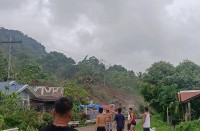Vietnamese authorities and wildlife conservationists struggle to contain the illegal trafficking of the pangolin as CITES is set to discuss the species status at its 17th meeting of the Conference of the Parties in Johannesburg later this month.
The pangolin, a nocturnal mammal covered with scales that resembles a cross between an armadillo and an anteater, is protected under the Convention on International Trade in Endangered Species of Wild Fauna and Flora (CITES).
Pangolins can be found in Africa and Asia. The demand for the animal remains strong in parts of Asia, where its scales, meat and blood are prized for their supposed medicinal value.
Vietnam is at the centre of the trade according to Bui Thi Ha, the Deputy Director Of Education For Nature Vietnam (ENV), an organization that works to reduce consumer demand for wildlife products.
“Vietnam is both a transit point for pangolin trafficking, as well as a large consumer market. The destination for most of the pangolins is China, but the demand for them are on the rise, especially in the big cities,” she says.
The International Union for Conservation of Nature (IUCN) at its latest World Conservation Congress urged all its members to support transferring the status of all eight pangolin species from Appendix II, which controls the trade of a species to avoid overutilisation, to Appendix I, which restricts the trade of endangered species, at the next CITES meeting.
ENV says more than 2600 live pangolins and 30 tons of frozen pangolin meat and scales were seized by Vietnamese authorities in the past three years.
Vietnam is home to the Manis pentadactyla species, or “yellow pangolin” as it is known locally. Police seizures of yellow pangolin were rare, conservationists say. But now, more and more yellow pangolin are being seized and brought to sanctuaries, which means fewer are left in the wild.
“There was a period of time that lasted almost 10 years when we received only one yellow pangolin. But last year we received four of them. This is a sign that yellow pangolins are declining rapidly in Vietnam,” says Tran Quang Phuong manager for the Carnivore And Pangolins Conservation Program (CPCP).
Most of the pangolins in captivity in Vietnam are of the sunda species which are brought from Indonesia and Malaysia to Vietnam in transit on their way to the Chinese market.
The demand is so high now that pangolins from Africa are now being shipped to the region says ENV.
A live pangolin can go for as much as $300 per kilogram and dealers often stuff additional materials into them in order to earn more.
“They crush construction rocks into powder and mix it with wheat and egg to pump into the pangolin stomach. When they are sent to rescue centres such as ours, the pangolins are already suffering from stomach diseases that develop into cancer. Therefore the number of pangolins that survive in captivity is very low,” says the director of the Hanoi Wild Animal Rescue Centre, Ngo Ba Oanh.
Oanh’s centre has large freezers full of pangolin carcasses which they keep as evidence. He says he can only destroy the carcasses once investigations are over.
It is not known how many pangolins remain in the wild but conservationists believe the numbers are dwindling. They say the number of trafficking cases have declined in the past year but also the number of pangolins seized which is an indication of their declining numbers in the wild.
In 2014 the Vietnamese government has put the pangolin at the top of their endangered species list making poaching, trafficking and trading of the animal and its products a crime punishable by up to 15 years in jail, and a $90,000 fine.
(c) Copyright Thomson Reuters 2016







